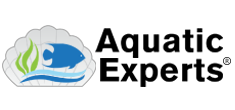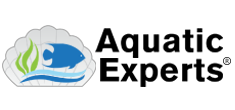

Refugiums: A Natural Solution for Nitrate and Phosphate Reduction

Refugiums: A Natural Solution for Nitrate and Phosphate Reduction
High levels of nitrates and phosphates can be a constant challenge for saltwater aquarists, but refugiums provide a natural and effective solution! These specialized tanks use macroalgae, mud, and sand to filter out excess nutrients, improving water quality. As macroalgae grow and are harvested, they remove nitrates, phosphates, and silicates, helping to control unwanted algae growth in the main display.
Since a refugium is separate from the primary aquarium, it also serves as a safe haven for copepods and amphipods, which provide a steady, natural food source for reef inhabitants. These tiny organisms can be netted for feeding or will travel naturally into the display tank through the connecting lines. However, predators such as fish, shrimp, and corals should never be placed in the refugium.
Choosing the Right Refugium
Refugium's come in various designs, including hang-on, internal, stand-alone, and built-in models. A hang-on refugium consists of an acrylic box with baffles, a powerhead that pumps water from the main tank, and a dedicated light source. Water flows through the refugium and is gravity-fed back into the aquarium, completing the cycle. Just add mud or sand and macroalgae, and it's ready to go!
When selecting a refugium, consider your available space and budget. Once installed and connected to the display tank, it can be set up with mud and/or fine-grain (sugar-sized) aragonite sand, with a depth of up to six inches. Adding live rock and macroalgae will establish a healthy filtration system.
Best Macroalgae for Nutrient Removal
-
Certain macroalgae thrive in refugiums and are highly effective at absorbing excess nitrates and phosphates:
-
Chaetomorpha
-
Ulva (Sea Lettuce)
-
Halymenia (Red Seaweed)
-
Gracilaria (Red Seaweed)
Regular trimming and thinning of these macroalgae prevent nutrient buildup while keeping the system balanced.
-
Lighting & pH Stability
To grow macroalgae effectively, refugiums require a light source of 5,000 to 6,500 Kelvin. A fixture producing at least 4 watts per gallon (for refugiums under 16 inches deep) ensures optimal photosynthesis.
To maintain stable pH and oxygen levels, refugium lights should be set to turn on opposite the display aquarium's light cycle. During daylight hours, plants and algae in the main tank absorb carbon dioxide and release oxygen through photosynthesis. When the main lights turn off, CO₂ levels rise, lowering the pH. Running a refugium light at night keeps the system balanced by allowing algae in the refugium to absorb excess CO₂ and produce oxygen.
Optimize Your Filtration System
Pairing a refugium with high-quality filter media enhances nutrient control and water clarity. We offer a range of premium filtration materials designed to maximize efficiency in both saltwater and freshwater aquariums. Browse our selection and keep your tank thriving:
Dependable Products For All Types Of Aquariums and Ponds
Join the CLUB for new videos, discount codes, and more!
Join The Club for A 15% OFF Coupon
Aquatic Experts provides simple solutions, tested products, and expert information to aid aquarium and pond hobbyists in creating exceptionally beautiful, healthy aquariums and ponds.


